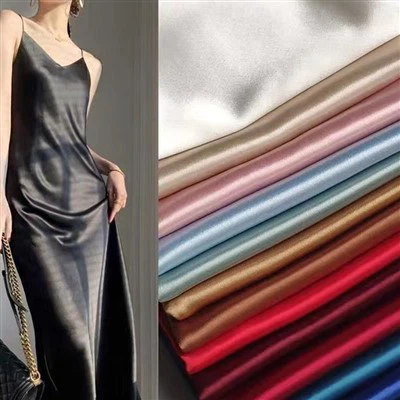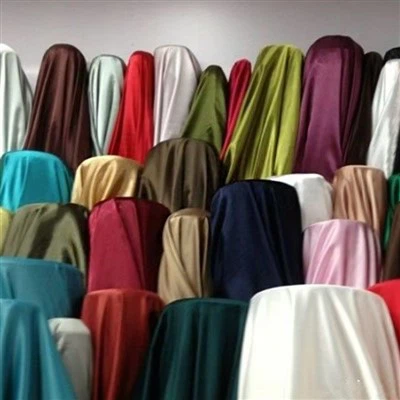Hey there! As an Abaya fabric supplier, I've seen my fair share of both authentic and fake Abaya fabrics in the market. It can be a real headache for buyers to tell them apart, but don't worry, I'm here to share some tips on how to distinguish authentic Abaya fabric from the fakes.
Understanding the Basics of Abaya Fabric
First off, let's talk a bit about what Abaya fabric is. Abayas are traditional long robes worn by women in many parts of the Middle East. The fabric used for Abayas needs to be comfortable, breathable, and often has a certain look and feel that's characteristic of the style.
Authentic Abaya fabrics are usually made from high - quality materials like natural fibers or a well - blended combination. Cotton, silk, and wool are some common natural fibers used. These materials not only offer comfort but also have a unique texture and drape that's hard to replicate with cheaper alternatives.
Visual Inspection
One of the first things you can do is a visual inspection. Authentic Abaya fabric often has a more refined appearance. The colors are usually rich and even, without any signs of fading or blotchiness. When you look closely at the weave, it should be tight and uniform.
Fake fabrics, on the other hand, might have a less polished look. The colors could be off - tone, and you might notice uneven dyeing. The weave might be loose in some areas, or there could be visible flaws like holes or frayed edges.
For example, if you're looking at a Polyester Embossed Bubble Fabric, an authentic version will have a well - defined embossed pattern. The bubbles will be evenly spaced and of a consistent size. In a fake, the pattern might be blurry, and the bubbles could be irregular.


Feeling the Fabric
The tactile experience is also crucial. Run your fingers over the fabric. Authentic Abaya fabric made from natural fibers will have a soft, smooth feel. Cotton, for instance, is gentle on the skin and has a slightly cool touch. Silk has a luxurious, slippery texture.
Fake fabrics, especially those made from low - quality synthetics, might feel rough or sticky. They could also have a plasticky feel. If the fabric seems too stiff or doesn't have that natural give and drape, it's likely a fake.
Take the Four Way Stretch Polyester Spandex Fabric as an example. An authentic version will have a smooth stretch that rebounds well. When you stretch it, it should go back to its original shape without any bunching or distortion. A fake might have a jerky stretch or not stretch at all in some areas.
Checking the Label
Don't overlook the label. Authentic Abaya fabric should have a clear label indicating the fabric composition. It will tell you what percentage of each fiber is used. For example, it might say "100% cotton" or "70% silk, 30% polyester".
Fake fabrics might have misleading labels. They could claim to be made of a certain fiber when they're actually mostly synthetic. Some might not have a label at all, which is a big red flag.
Burn Test (Caution!)
This is a more advanced method and should be done with extreme caution. You can take a small, inconspicuous piece of the fabric and burn it. Different fibers burn in different ways.
Natural fibers like cotton and silk will burn with a smell similar to burning paper or hair. They will leave an ash that can be easily crushed. Wool burns slowly and has a distinct smell of burning hair.
Synthetic fibers, on the other hand, will melt and give off a plastic - like smell. They will form hard beads or lumps when they cool. However, this test should only be done if you're confident in your ability to handle fire safely and if you have permission to damage a small part of the fabric.
Brand Reputation
Another way to ensure you're getting authentic Abaya fabric is to buy from a reputable brand or supplier. As a supplier myself, I know the importance of maintaining a good reputation. Reputable suppliers source their materials from reliable manufacturers and have strict quality control measures in place.
You can do some research online to see what other customers are saying about a particular brand or supplier. Look for reviews and testimonials. If a brand has a lot of negative feedback about selling fake or low - quality fabrics, it's best to avoid them.
Price Comparison
Price can also be a clue. Authentic Abaya fabric made from high - quality materials will generally be more expensive. If you see a price that seems too good to be true, it probably is.
Fake fabrics are often sold at a much lower price because they use cheaper materials and have lower production costs. However, don't assume that all expensive fabrics are authentic either. Some unscrupulous sellers might overcharge for fake products. So, use price as just one factor in your decision - making process.
Looking at the Finishing
The finishing of the fabric is another tell - tale sign. Authentic Abaya fabric will have a well - finished edge. The seams will be straight and strong. There won't be any loose threads or uneven stitching.
Fake fabrics might have poorly finished edges. The seams could be crooked, and there might be a lot of loose threads hanging off. This not only looks unprofessional but also indicates a lower quality of workmanship.
Colorfastness Test
You can also do a simple colorfastness test. Dampen a white cloth and rub it gently on a small, hidden area of the Abaya fabric. If the color transfers onto the white cloth, it's a sign that the fabric has poor colorfastness.
Authentic fabrics usually have good colorfastness, especially if they've been properly dyed and treated. Fake fabrics might use cheap dyes that bleed easily, which can be a major problem if the Abaya gets wet or is washed.
Conclusion
Distinguishing authentic Abaya fabric from fake ones can be a bit of a challenge, but by using these methods, you can make a more informed decision. Remember to do a visual inspection, feel the fabric, check the label, and consider the price and brand reputation.
If you're in the market for Abaya fabric, I encourage you to get in touch with me. As a reliable supplier, I offer a wide range of high - quality Abaya fabrics, including Polyester Embossed Bubble Fabric, Four Way Stretch Polyester Spandex Fabric, and Embossed Stripe Microfiber Fabric. I'm happy to answer any questions you might have and help you find the perfect fabric for your needs. Let's start a conversation and see how we can work together!
References
- Textile Industry Handbook: A guide to fabric types, manufacturing processes, and quality control.
- Consumer Reports on Textiles: Insights into fabric quality and authenticity.






